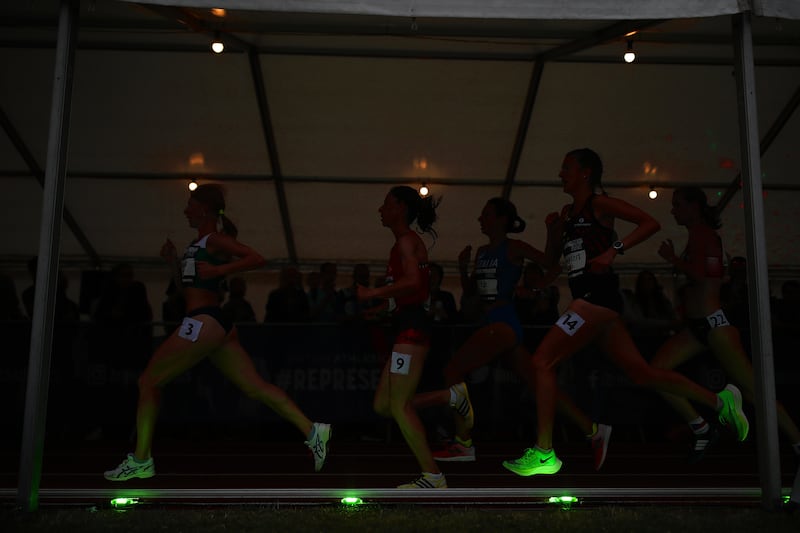The World Athletics Championships are still five weeks away yet by now most athletes are primed and ready to go.
The Diamond League season has been running since early May and just a few countries, including Ireland (July 29th-30th in Santry), have still to hold their national championships on the last weekend before qualifying entries close.
The last date for athletes to achieve the World Championships qualifying standard is July 31st, and this is also the last date for athletes to improve their world rankings with the chance to qualify through quota places outside of those qualified automatically.
The qualifying marks have increased substantially in recent years as athletes continue to raise the bar in performances, due in no small part to the improved shoe technology and, most noticeably in 2023, the increased use of what is called Wavelight technology.
All-Ireland hurling semi-finals: Throw-in times, where to watch and ticket details
Seán Moran: 25 years since tyranny of sudden death ended in championship football
Anna Foster continues seamless slide into the pro ranks
First game of Lions tour showed why the lineout is heading for same farcical fate as the scrum
Let me explain for those who haven’t seen it at play: the Wavelight technology is a revolutionary light system on the inside of lane one at track meets that sets the pace for the athletes to keep up with while they chase an agreed set pace to achieve a desired time.
It is a remarkable system far removed from the old days of getting someone to act as a hare. With this technology in any given race there can be various targets in play; for a world record target at the front of the field there is a green light while another white light often sets a World Championship qualifying standard, meeting record or national record standard of the country hosting the track meet.
The human element still exists with designated athletes following a blue light to set the early pace but, as traditionally has been the case, these athletes will stop after a few laps.
The Wavelight technology has been around for a few years but has taken some time to fully catch on and to be fully appreciated by the athletes.
I first saw it at a world record meet in Valencia in 2020 when Letsenbet Gidey of Ethiopia broke the women’s 5,000m world record when running 14 minutes 6.61 seconds and Joshua Cheptegei of Uganda took down the men’s 10,000m world record when running 26 minutes 11 seconds.
At the time this was very much viewed as being experimental, and in those times of Covid and empty stadiums it seemed more a novelty than something that would really change the sport. However, just like the shoe technology helped raise the bar the Wavelight technology is now also pushing the bar that bit higher and giving athletes extra assistance to help them run faster than we ever thought possible.
The Wavelight technology seems most effective in distance races where all athletes end up running on the inside lane alongside the lights and, for those watching on television and or sitting in the stands, it appears the athletes are being pulled along by the moving lights. When the mood is not quite right for those fast times the lights can be seen to run off in the distance when the athletes revert back to pure racing and battle it out old-school for the win.
At the Diamond League meet in Oslo recently I was invested in watching the women’s one mile race where the stadium record was under threat from some of the world’s best athletes. I was sitting in the stands and found myself watching the light go around the track more than the race itself and questioned myself if it was always such a good thing to be chasing times and, in the process, missing out on the actual race? In that instance I found my eyes were drawn to the race against the lights and lost the connection with the actual athletes.
It’s a bit like when you are in a stadium at a live event but your attention is drawn to the big screen rather than the whole stadium and everything that is taking place.
Whenever I catch myself in the narrow view I sit back and see what else I am missing, and now realise that as much as Wavelight technology has a place in athletics events it also narrows the focus and also narrows our connection as fans with the individual athletes.
All sports need personalities to make it more attractive, yet athletics is leading towards being more about numbers and statistics, with just a very small number of personalities connecting with the fans.

As a result I feel this reduces the growth and exposure of the sport beyond a very niche few that can relate to fast times and ranking points.
If every race you go to see is set up and paced perfectly then the races become more predictable and less exciting to watch.
The championship events are the few that remain free for now from Wavelight technology, where actual competition and racing is still the draw. The cream still rises to the top, and even athletes who do not have very much race practise will find a way to qualify through the rounds and compete in the finals.
It’s only a matter of time, however, before the lights will enter the national, European, World Championship and Olympic stage, but I’m not sure it is such a good thing as it creates a more one dimensional sport with too much predictability and very few surprises.
The new personalities of the sport are crushed when every race is a time trial. Competition is squashed by a pace that is requested by one athlete and as a result creates a pecking order and the races are organised in favour of the better athletes and all the rest are expected to line up and then just fall in line.
The Wavelight technology is an extra cost for smaller meets that see it as a way to attract some better athletes, but not every meet can afford it.
Some of these are the older, more traditional meets that are steeped in history, where the winners have included some of the greatest athletes ever and have continued to produce great races for the fans that turn up to support each year.
But events like the Morton Games and Cork City Sports are in danger of becoming extinct if we don’t find a way to market these with match races and to promote rivalries. There’s a need to highlight the value of securing your name in the history annals that connect the modern athlete with the past, to link today’s record breakers to the early pioneers who first set standards in more simple times when racing delivered excitement and also pushed the human boundaries of that time.
Names will be remembered far longer than the ever-changing numbers.
















